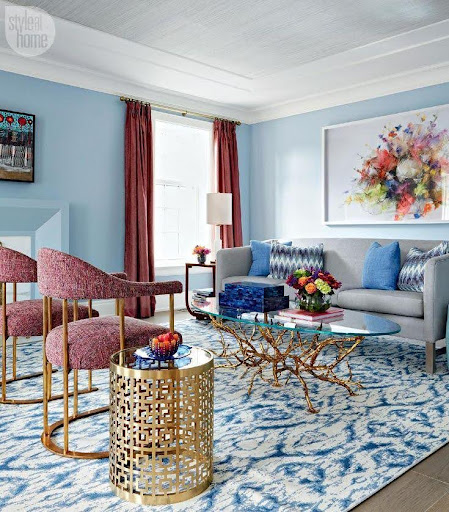
- Paints for Home
Paints for Home
- Waterproofing
- Find your Colour
Find your ColourAll Colours Interior Colours Exterior Colours Popular Colours Colour Resources Colourvista Touch Any Colour One Price Calculator- Inspiration
- Industrial Coatings
- Projects
- Assistance
Assistance- About
About JSW Paints×Important Notice
It has come to our notice that certain persons impersonating themselves as employees/agents of JSW Paints Limited (“JSW Paints”) are reaching out to individuals/businesses under a false pretext of offering JSW Paints dealership.
We advise the public at large not to be attracted/lured by any such communications/emails. Anyone responding to such communication/emails would be doing so at their own peril and JSW Paints shall not be liable for any consequences thereof whether directly or indirectly. We clarify that JSW Paints does not call for, solicit or accept monies in any form for granting JSW Paints dealerships.
For any query related to JSW Paints dealership only use following communication medium
Website: https://www.jswpaints.in
Toll-free number 1800-121-5797
Email Id: ccpaints@jsw.in.
Home Decor | 27-02-2025Understanding Warm vs. Cool Colors for Interior Spaces
When designing an interior space, colour plays a crucial role in setting the mood, defining the ambience, and influencing how people feel within a room. Warm and cool colours are two primary categories that designers use to create harmony and evoke specific emotions. Understanding the impact of these colours can help homeowners and designers make informed decisions when selecting a colour scheme for their spaces.
In this article, we’ll explore the difference between warm and cool colours, their psychological effects, and how to effectively use them in interior design.
What Are Warm and Cool Colours?
Warm and cool colours are categorized based on their position on the colour wheel.
Warm Colors: These include reds, oranges, yellows, and variations of these hues. They tend to evoke feelings of warmth, energy, and cosiness. Warm colours are often associated with the sun, fire, and heat.
Cool Colors: These include blues, greens, purples, and their variations. Cool colours create a sense of calm, relaxation, and spaciousness. They are often linked to water, sky, and nature.
Understanding how these colours interact with each other and their surroundings can help create a balanced and inviting interior walls.
Warm and Cool Color Options for Different Rooms
Choosing the right colour palette for a space can transform its ambience and functionality. Below are various warm and cool colour options, along with the best rooms to use them in.
Warm Colours: Inviting and Energetic
Warm colours create a cosy, welcoming atmosphere that encourages social interaction and liveliness. They work best in high-energy spaces.

1. Orange – Cheerful, energetic, and playful
Deep Orange adds warmth and excitement, creating a vibrant and welcoming feel. It’s great for spaces where people gather and interact.
Best for: Entryways, Kitchens, Playrooms2. Yellow – Bright, uplifting, and warm
Yellow enhances mood, boosts creativity, and creates a sunny atmosphere. Lighter shades are great for kitchens, while softer hues work well in workspaces.
Best for: Kitchens, Breakfast Nooks, Home Offices3. Terracotta & Earthy Tones – Cozy, rustic, and grounding
Best for: Bedrooms, Living Rooms, Dining Areas
Terracotta or Earthy warm tones bring a natural, comfortable feel to a space, making rooms feel inviting without being too intense.Cool Colors: Calming and Refreshing

Cool colours promote relaxation and serenity, making them perfect for spaces where calmness is desired.
1. Blue – Tranquil, refreshing, and peaceful
Blue reduces stress and promotes relaxation, making it perfect for spaces meant for rest and focus. Lighter blues work well in small rooms, while deeper blues create a dramatic and cozy atmosphere.
Best for - Bedrooms, Bathrooms, Home Offices2. Green – Natural, refreshing, and balanced
Green symbolizes nature and renewal, making it an excellent choice for creating a peaceful environment. Soft greens bring a soothing touch, while darker greens add elegance.
Best for: Bedrooms, Living Rooms, Bathrooms3. Lavender & Purple – Soft, dreamy, and elegant
Lavender provides a calming effect, while deeper purples add a sense of luxury and sophistication.
Best for: Bedrooms, Bathrooms, Meditation SpacesUsing Warm and Cool Colours Together
Pairing Complementary Tones
- Blue and Orange → A balanced, vibrant contrast
- Green and Yellow → A refreshing yet warm combination
- Purple and Gold → A luxurious, regal pairing
Blending with Neutrals
- Beige with blue tones creates a beachy, airy feel
- Gray with warm yellow adds warmth without overwhelming
- White with earthy tones maintains a balanced, grounded aesthetic
Considering Lighting and Room Size
- Small rooms benefit from cool tones to create an open feel
- Large rooms can use warm colours to feel cosier
- South-facing rooms can handle cool colours, while north-facing rooms should lean towards warm tones for balance
- By strategically choosing and combining warm and cool colours, you can create a space that is both functional and visually appealing!
Final Thoughts
Understanding the impact of warm and cool colours allows you to design interior spaces that align with your desired ambience. Warm colours bring energy and cosiness, making them perfect for social areas, while cool colours promote relaxation and tranquillity, making them ideal for private spaces. By balancing these colours with neutral tones, lighting, and thoughtful colour combinations, you can create a visually appealing and comfortable living environment.
Would you like a free color consultation for your home?Related articlesHome DecorLiving Room Colour Psychology: Which Paint Colours Create the Most Welcoming Space?Your living room is the heart of your home—a place where family and friends gather to connect, relax, and create memories. The colours you choose for your living room walls can pro ...Home Decorpopular colour combinations for home interior paintingColours bring a different vibe and ambience to your room. Your home interior paint colours represent interests, dislikes, and your personality. Colour has the power to ...Home Decor10 Modern Two-Colour Living Room CombinationsA living room is the first space that people see upon entering the house. It is a space where you tend to spend a lot of time and invite guests. Therefore, it is natural that you w ...Looking for more inspiration ?Get decor inspiration and colour advice directly delivered to your inbox.Paints for HomeInterior Walls Exterior Walls Preparation Products Waterproofing Wood Finish Metal Finish Application ToolsFind your ColourAll Colours Interior Colours Exterior Colours Popular Colours Colour Resources Colourvista Touch Any Colour One Price Calculator